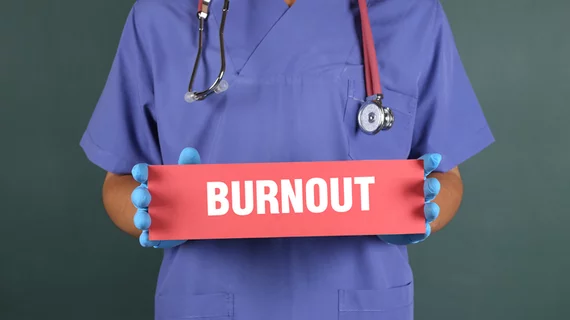Major predictors of burnout among radiology residents in each year of training
Radiology residents are susceptible to burnout as they attempt to juggle clinical, administrative and scholarly duties. But there are a few factors that can help predict those who are most susceptible to such on-the-job fatigue, experts detailed Saturday.
Third-year radiology residents, in particular, reported the greatest number of differences when compared to others, according to survey results published in JACR. Those from this segment who had a child or partner were more likely to report lower emotional exhaustion and higher perceived personal accomplishment. Meanwhile, first-year residents reported a greater feeling of success if they were male, while liability levels of greater than $200,000 was the only factor that affected rads across multiple segments.
“As debt was the only predictor that significantly impacted multiple radiology cohorts, future research should evaluate if debt level affects burnout subcomponents beyond residency or how debt level affects burnout among senior residents,” first author Rebecca Le, MD, with Rochester General Hospital, and co-authors wrote March 20.
To reach their conclusions, Le et al. surveyed 2,823 U.S. radiology trainees during the one-year period beginning in October 2018. All told, 486 residents were included in the final sample, representing more than 100 residents apiece from years 1-4. Of those, 67% had at least one child while 66% had a partner. About half had $200,000 or more in medical school debt, and about 66% were men.
Findings that year-one male residents had higher levels of personal accomplishment mirror another previous survey of residents, which found that females reported increased averages of combined burnout scores. However, this gender-specific difference did not persist into later years of training. Le and co-authors noted that this could be due to sample size and advised that further research is needed to explore burnout disparities among young rads.
Read more about the survey findings in the Journal of the American College of Radiology here.

